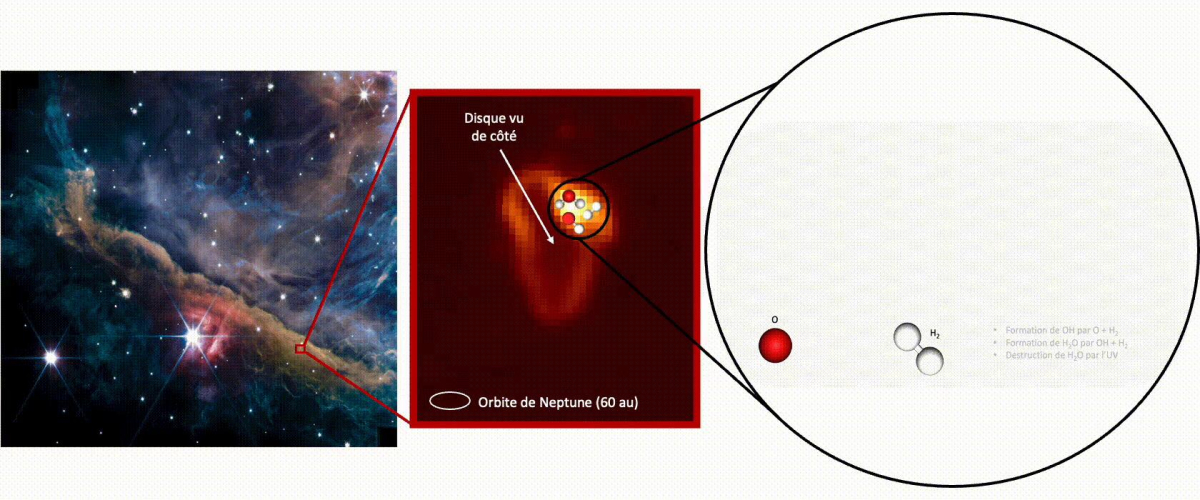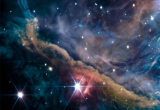The James Webb Space Telescope witnesses an Earth oceans’ worth of water destroyed every month
An international team, involving scientists from IAS, IRAP, ISMO and LERMA, has shed light on the destruction and reformation of a large quantity of water in the planet-forming disk “d203-506” located at the heart of the Orion Nebula. This discovery was made possible by an original multidisciplinary approach that combines observations from the JWST space telescope and quantum physics calculations. The study, carried out as a part of the PDRs4All¹ Early Release Science (ERS) program and led by Marion Zannese, a PhD student at the Institut d’Astrophysique Spatiale, has been published in Nature Astronomy.
The intense ultraviolet radiation produced by nearby massive stars leads to the rapid destruction and reformation of water in d203-506, making it a true interstellar laboratory. When water (H₂O) is destroyed by ultraviolet light, a hydroxyl radical (OH) is released with a fast-spinning (rotational) state, this is followed by the emission of photons in the mid-infrared. In total, it is estimated that the equivalent of a terrestrial ocean is destroyed every month in the young system d203-506! Thanks to near-infrared observations, JWST also reveals that the hydroxyl radical is also produced in abundance by reactions of atomic oxygen via the reaction O+H₂. OH is a key intermediate in the formation of water, as it then reacts with H₂ to form water via the OH+H₂ reaction. This brings us full circle. Some of the water that makes up our oceans may actually have gone through such a cycle!
This active water chemistry was detected with the James Webb Telescope (JWST), around "d203-506" thanks to a close collaboration with quantum dynamics experts from Madrid, Salamanca and Leiden. The reduction of the JWST/MIRI-MRS data, the instrument used to detect the OH molecule, was carried out at the French MIRI center of expertise, with the support of CNES and the ANR-labcom INCLASS between IAS and ACRI-ST.
¹ PDRs4All (https://pdrs4all.org/) is one of the 13 Early Release Science programs, selected by NASA to demonstrate the capabilities of the JWST, bringing together international consortia.
Links :
- Université Paris-Saclay press release
- Article in Nature: Zannese, M., Tabone, B., Habart, E. et al. OH as a probe of the warm-water cycle in planet-forming disks. Nat Astron (2024). DOI: 10.1038/s41550-024-02203-0
Contacts at IAS: Marion Zannese, Benoit Tabone, Émilie Habart

Left and center: the young disk d203-506 buried in the Orion Nebula as seen by the JWST ©NASA/ESA/CSA/PDRs4All/Salomé Fuenmayor. Right: Animation illustrating how the formation and destruction of water was revealed by JWST observations (please click on the image to start the animation). ©M. Zannese




